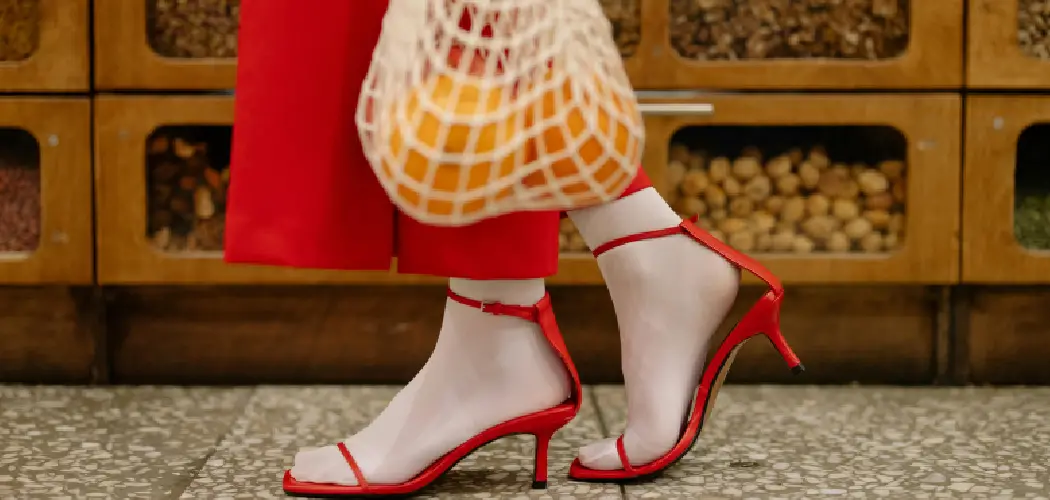Do you need help with how your shoes wear unevenly? Is one heel more worn than the other?
Uneven heel wear on shoes is a common issue that many people face. It typically occurs due to abnormal gait patterns or overpronation, leading to excessive wear on one side of the shoe’s heel. This not only affects the shoe’s longevity but can also impact your posture and comfort. Thankfully, several strategies can help address and correct this problem, restoring your footwear’s balance and extending its life. Solutions range from simple insole adjustments to professional shoe repair. Understanding the underlying causes and exploring corrective measures can ensure your shoes support your stride successfully.
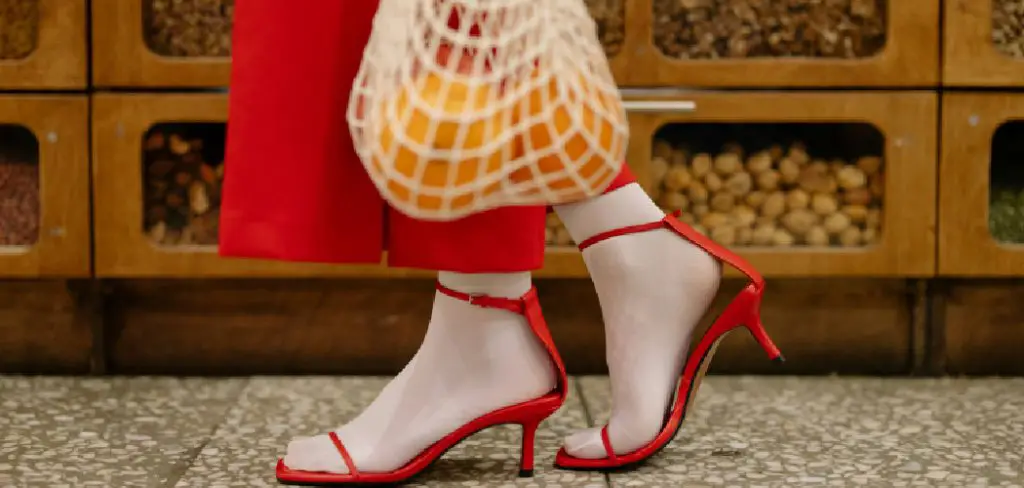
In this guide on how to correct uneven heel wear on shoes, we’ll explore effective techniques to remedy uneven heel wear and offer maintenance tips to prevent future occurrences.
What Will You Need?
Before you begin correcting the uneven heel wear on your shoes, gathering some necessary supplies is essential. These items will vary depending on the severity of the uneven wear and the preferred correction method. Here are a few things you may need:
- Measuring tape or ruler
- Scissors
- Gel or foam heel inserts
- Shoe gels or pads for insoles
- Shoe stretcher (for leather shoes)
- Sandpaper (for wooden heels)
- Professional shoe repair services
Once you have these items, you can move on to the correction process.
10 Easy Steps on How to Correct Uneven Heel Wear on Shoes
Step 1. Assess the Wear Pattern
Understanding the specific wear pattern on your shoes is crucial for determining the appropriate corrective measures. Begin by placing your shoes flat and examining them from the back to detect any tilting or unevenness. Look at the heels from different angles, focusing on areas where the sole is most worn down—typically the inner edge for overpronation or the outer edge for supination. Consider the type of shoes and the material they are made from, as this can influence how wear develops.
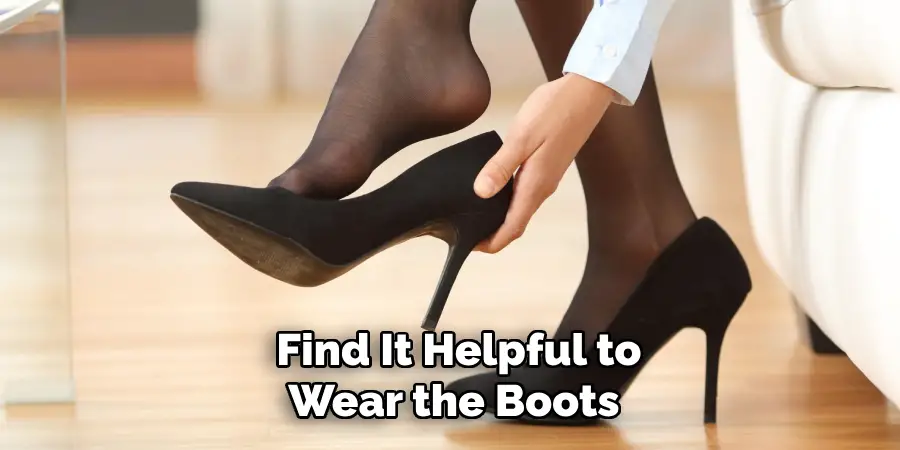
You might also find it helpful to wear the boots and observe your stance in a mirror or ask someone to take a picture of your feet from the back. This assessment will guide you in selecting the proper corrective techniques, whether inserting heel pads, reinforcing the heels, or consulting a shoe repair professional for insoles and adjustments.
Step 2. Clean the Shoe’s Surface
Before applying any corrections, cleaning the shoes thoroughly to ensure that any materials you apply adhere properly is essential. Use a damp cloth or sponge to wipe away dirt, dust, and grime from the shoe, paying particular attention to the heels and soles. If there are stubborn stains, a mild soap or shoe cleaner may be used, but ensure they are suitable for the material of your shoes to avoid damage.
Allow the boots to dry completely at room temperature before proceeding to the next step. A clean surface will help any pads or inserts attach securely and work more effectively, enhancing the overall outcome of your corrective measures.
Step 3. Insert Heel Pads or Inserts
After assessing the wear pattern and cleaning the shoe, it’s time to add support and alleviate pressure on worn areas by inserting heel pads or inserts. Choose gel or foam inserts that match the degree of wear and suit your shoe type. Place the insert inside the shoe’s heel area, ensuring it sits flat and covers uneven surfaces. Adjust them to provide the necessary lift to correct your walking pattern.
These inserts not only help redistribute weight and reduce wear but also enhance comfort, giving cushioning that eases the impact on your feet.
Step 4. Reinforce the Heel with Sandpaper
For shoes with wooden heels, reinforcing the worn areas with sandpaper can be an effective way to even out the surface and prepare it for repairs. Begin by wrapping a piece of fine-grit sandpaper around a flat object like a wooden block for even pressure. Gently sand the worn portion of the heel, moving in the same direction as the wear pattern to smooth out any rough edges. Be cautious not to over-sand, as this can further reduce the height of the heel.
Once the surface is even, you can consider applying a heel cap or taking the shoe to a cobbler for professional reinforcement to enhance durability and balance.
Step 5. Adjust Shoe Laces and Straps
Sometimes, how shoes are fastened can contribute to uneven wear, especially in shoes with laces or straps. Ensuring your shoes are securely and evenly laced is essential for maintaining proper foot alignment. Double-check your lacing technique, adjusting it to provide uniform tension across the shoe. If your shoes have straps, ensure they are tightened evenly on both sides, providing balanced support.
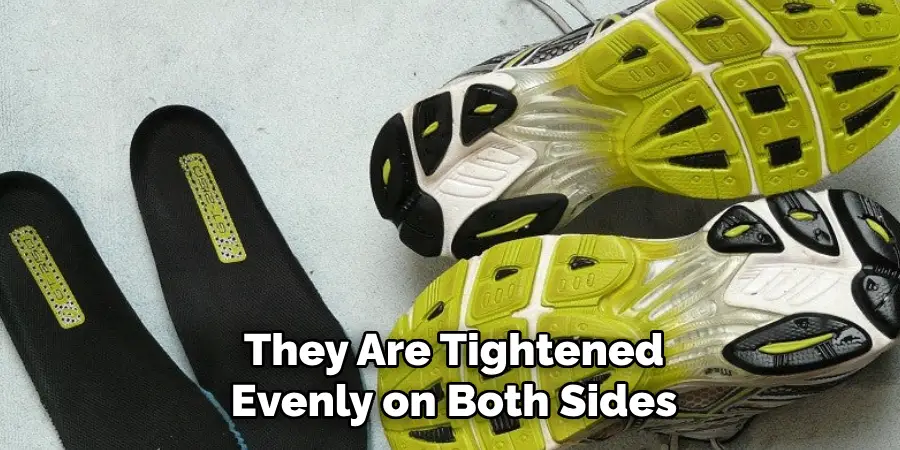
This adjustment may seem minor, but it can significantly influence how weight is distributed across your feet, correcting uneven heel wear. Properly lacing or fastening your shoes ensures they fit snugly, enhancing stability and comfort during wear.
Step 6. Use a Shoe Stretcher
If you notice uneven wear, particularly in leather shoes, using a shoe stretcher can help reshape and extend the life of your footwear. A shoe stretcher can alleviate any tightness that might be causing improper walking patterns and uneven wear. Insert the stretcher into your shoe, ensuring it is snug, and gently turn the handle to expand its shape in areas requiring more room.
Leave the stretcher in place for a few hours or overnight to allow the shoe to adjust to the new shape. For added effectiveness, consider using shoe stretch spray or conditioner alongside the stretcher, which can soften the leather and facilitate more even stretching. This step helps maintain the original shape and fit of the shoe, promoting balanced wear over time.
Step 7. Apply Leather Conditioner or Polish
To further protect your shoes and prolong their lifespan, apply a suitable leather conditioner or polish after reshaping them with a stretcher. This helps maintain the leather’s flexibility and prevent it from drying out and cracking, contributing to uneven wear. Use a soft cloth to apply a small amount of conditioner or polish evenly over the shoe’s surface, paying attention to the toe and heel areas.
Allow the product to absorb for a few minutes, then buff the shoes with a clean cloth for a polished finish. Regular conditioning keeps leather looking its best and supports the shoe’s structural integrity, promoting even wear and providing a protective barrier against moisture and dirt.
Step 8. Regularly Rotate Your Shoes
To prevent uneven wear and extend the life of your footwear, it’s beneficial to rotate between different pairs of shoes regularly. This allows each pair to rest and recover from daily stress, reducing the accelerated breakdown of materials that come from constant use. Try to have multiple pairs for various activities and switch them every few days. Not only does rotation help preserve the soles and heels, but it also provides an opportunity for moisture and odor to dissipate, maintaining the shoes’ freshness.
Step 9. Consider Professional Shoe Repair
If you’ve tried various methods to correct uneven heel wear and the problem persists, it may be time to consult a professional shoe repair service. Skilled cobblers can assess the condition of your shoes and offer tailored solutions beyond at-home fixes. They suggest techniques such as resoling, re-heeling, or adding custom orthotic inserts, which are expertly crafted to address specific wear patterns and enhance shoe performance.
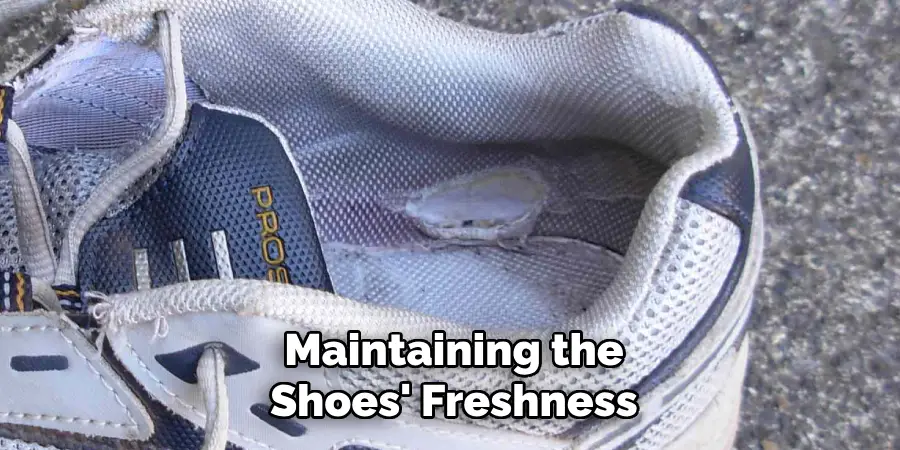
Professional repair revitalizes the appearance of worn footwear and restores functionality, prolonging the life of your cherished shoes. Investing in expert assistance ensures optimal results, helping your shoes withstand daily use while maintaining comfort and balance.
Step 10. Monitor Your Walking Habits
How you walk can significantly impact how your shoes wear out over time. Pay close attention to your walking habits to ensure you’re not unconsciously contributing to uneven heel wear. Try to maintain a balanced gait by keeping your feet aligned with your hips and maintaining an upright posture. Avoid dragging your feet, as this can cause excessive friction on specific areas of your shoes.
Additionally, being mindful of how you distribute your weight on each step can help prevent uneven wear. If you notice that your walking habits are leading to abnormal wear patterns, consider consulting a podiatrist for a professional assessment and advice on corrective footwear or orthotic solutions to help improve your overall walking mechanics. Regular monitoring and adjusting your walking habits can contribute to healthier footwear and less frequent wear-related issues.
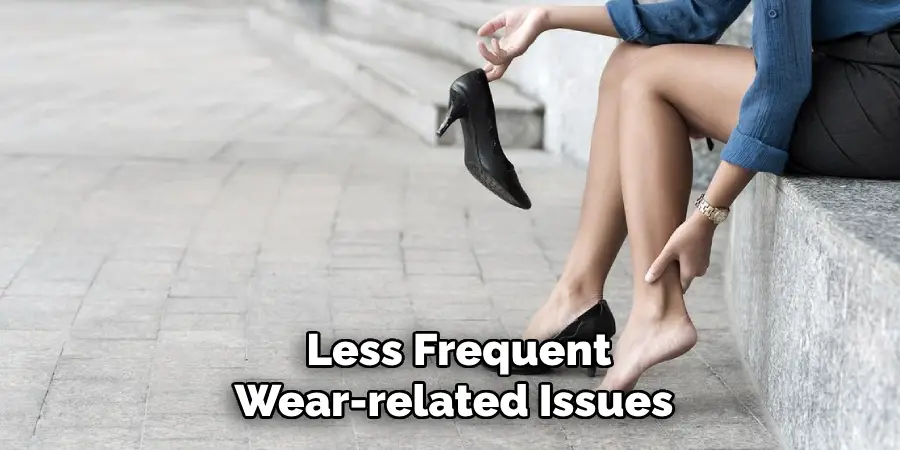
Following these steps can effectively address and prevent uneven heel wear in your shoes.
Conclusion
How to correct uneven heel wear on shoes is a multi-faceted process that requires both proactive and reactive measures.
By understanding the underlying causes, such as foot misalignment or improper lacing, and utilizing tools like shoe stretchers and leather conditioners, you can significantly enhance the longevity and comfort of your footwear. Regularly rotating shoes and maintaining proper walking habits are simple yet effective strategies to distribute wear evenly. Additionally, seeking the expertise of a professional cobbler can provide advanced solutions when at-home methods fall short.
By implementing these comprehensive steps, you’ll correct existing uneven wear and prevent future occurrences, ensuring your shoes remain in optimal condition for longer.

